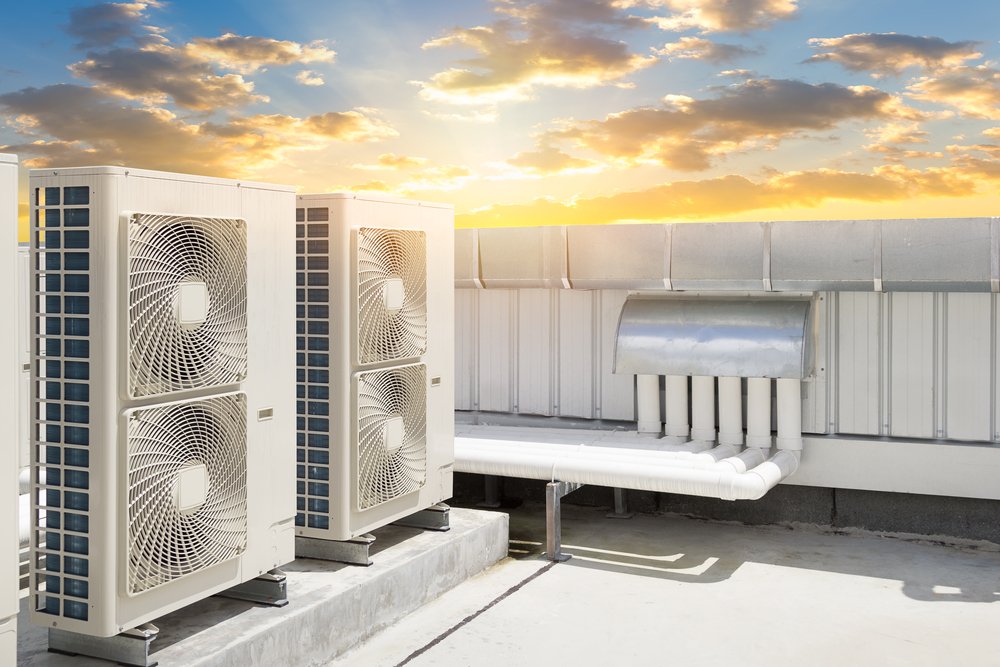Expert Advice: What Temperature Should Air Come Out of the AC Vent When Cooling?
Are you tired of sweltering summers or stuffy indoor environments? Do you often adjust the thermostat, hoping for that perfect blast of cool air to bring relief? If so, you're not alone.
The air temperature from your air conditioner's vent is crucial in creating a comfortable and refreshing space. The refreshing breeze rejuvenates you, the invisible embrace that protects your home from the scorching heat outside. But have you ever wondered what the ideal temperature should be? How cold should the air be when it flows from the vent?
In this article, we'll delve into the science of indoor cooling, uncovering the secrets behind the perfect AC vent temperature. Get ready to know how to maintain an optimal temperature in your home.
How Cold Should the Air Coming From Your Air Conditioner Be?
When it comes to the air coming out of your air conditioner, it's essential to understand that air conditioners don't create "cold" air. Instead, they work by removing heat energy from the existing stand and recirculating it in your environment. This process allows us to experience that refreshing coolness on a hot summer day.
So, what should be the ideal air temperature coming out of the vent of your air conditioner? Experts suggest looking at the temperature differential between the air being drawn in for cooling and the air being blown out. This temperature difference is known as the evaporator Delta T.
Ideally, there should be a temperature differential of around 14° to 20° Fahrenheit between the incoming air and the air being blown out by your air conditioner. This means that if the air entering the system is 75°F, the air coming out of the vent should be between 55°F and 61°F.
Also Read: 6 Pros and Cons of Ductless Mini Split Systems You Should Know About
What Is Supply and Return Air?
To understand the temperature of the air coming from your air conditioner, it's essential to familiarize yourself with the concepts of supply and return air. These terms are crucial to your HVAC (heating, ventilation, and air conditioning) system.
Supply air refers to the cooled or heated air distributed into your living spaces through the supply vents or registers. The air is blown out from the AC vent, delivering the desired temperature to the rooms in your home. The air supply creates a comfortable environment by regulating the temperature and providing adequate airflow.
On the other hand, return air is the air that is drawn back into the HVAC system to be conditioned once again. It is typically pulled through the return vents strategically located throughout your home. The return air vents carry the heat and humidity from the indoor spaces back to the air conditioner, where it undergoes cooling.
The temperature of the supply air is directly influenced by the temperature of the air coming back. As the return air passes through the air conditioning system, the heat is extracted and cooled before being redistributed as supply air. Therefore, monitoring the temperature of the return air can give you valuable insights into your air conditioner's performance and the cooling process's effectiveness.
How to Check the Air Temperature Differential Accurately
To ensure that your air conditioner is functioning optimally and producing the desired cooling effect, it's important to accurately measure the temperature differential between the supply and return air. Here's how you can check it:
1. Locate the Supply and Return Vents
Identify the supply vents where the cooled air is blown out and the return vents from where the air is drawn back into the HVAC system.
2. Use an Infrared Thermometer
Get an infrared thermometer, also known as a non-contact thermometer, to measure the temperatures of the supply and return air. An infrared thermometer allows you to measure the temperature without direct contact, making it convenient and efficient.
3. Aim the Infrared Thermometer at the Supply Vent
Point the infrared thermometer at one of the supply vents. Ensure that the vent is in the line of sight of the thermometer. Press the measurement button and wait for the reading to stabilize. This will give you the temperature of the air being blown out by your ac system.
4. Measure the Return Air Temperature
Move the infrared thermometer to a return vent located near the HVAC system. Aim it at the vent and take the temperature reading once it stabilizes. This will provide the temperature of the air being drawn back into the system.
5. Calculate the Temperature Differential:
Subtract the return air temperature from the supply air temperature. The resulting value will give you the temperature differential or the evaporator Delta T.
Following these steps with an infrared thermometer, you can accurately measure the temperature differential and determine if it falls within the recommended range of 14° to 20°F. This information can help you assess the performance of your air conditioning system and take appropriate steps to ensure optimal cooling efficiency.
Also Read: HVAC Lifespan: What is the Life Expectancy of an HVAC System
What If You Have Big Differences in the Vent Temperatures?
If you notice significant differences in the air temperatures coming from different vents in your home, it may indicate potential issues with your HVAC system. Here are a few possible causes and steps you can take to address the problem:
Blocked or Closed Vents
Check if any supply vents are blocked or closed. Restricted airflow due to blocked ducts can lead to temperature imbalances. Ensure that all supply vents are open and free from obstructions to allow proper airflow.
Dirty Air Filters
Clogged or dirty air filters can impede airflow and affect the cooling performance of your air conditioner. Check and replace the air filters regularly, as recommended by the manufacturer. Clean air filters promote better air circulation and help maintain consistent temperatures throughout your home.
Ductwork Issues
Examine your ductwork for any leaks, gaps, or separate sections. Leaky ducts can result in conditioned air escaping before it reaches the vents, leading to uneven cooling. Consider hiring a professional HVAC technician to inspect and seal any ductwork issues.
Insufficient Insulation
Inadequate insulation in certain areas of your home can cause temperature variations. Check for proper insulation in the walls, ceilings, and floors. Adding insulation where needed can help retain cool air and distribute it evenly.
HVAC System Maintenance
Regular HVAC system maintenance is crucial to ensure optimal performance. Schedule professional care to clean the coils, check refrigerant levels, and ensure all components function correctly. A well-maintained system is more likely to provide consistent and balanced vent temperatures.
If the temperature differences persist despite these measures, it's advisable to consult a licensed HVAC technician. They can diagnose any underlying issues, such as malfunctioning dampers, faulty thermostats, or compressor problems, and provide appropriate solutions.
If You Need Help With AC Repair in Austin
Maintaining the right temperature for the air out of your air conditioner is crucial for creating a comfortable and refreshing indoor environment. You can ensure optimal cooling efficiency by understanding the temperature differentials, checking the supply and return air, and addressing any issues with your HVAC system.
However, if you're experiencing significant temperature variations in the vent temperatures despite your efforts, seeking professional help is advisable. We understand the importance of a well-functioning air conditioning system in Austin, especially during the hot summer. If you need assistance with AC repair, don't hesitate to reach out to our team of experienced HVAC technicians.
Our G & S Mechanical experts extensively diagnose and resolve AC issues. Whether it's troubleshooting temperature imbalances, inspecting ductwork, or performing necessary repairs, we're here to help. Trust us to ensure that your air conditioner works at its best, providing consistent and comfortable cooling throughout your home. Contact us to schedule a consultation today!


